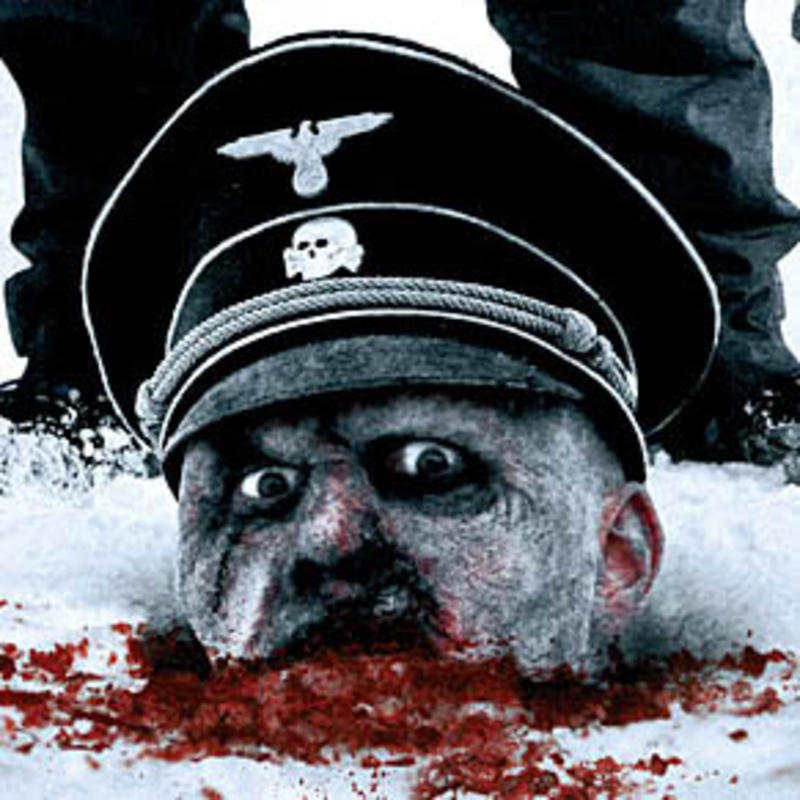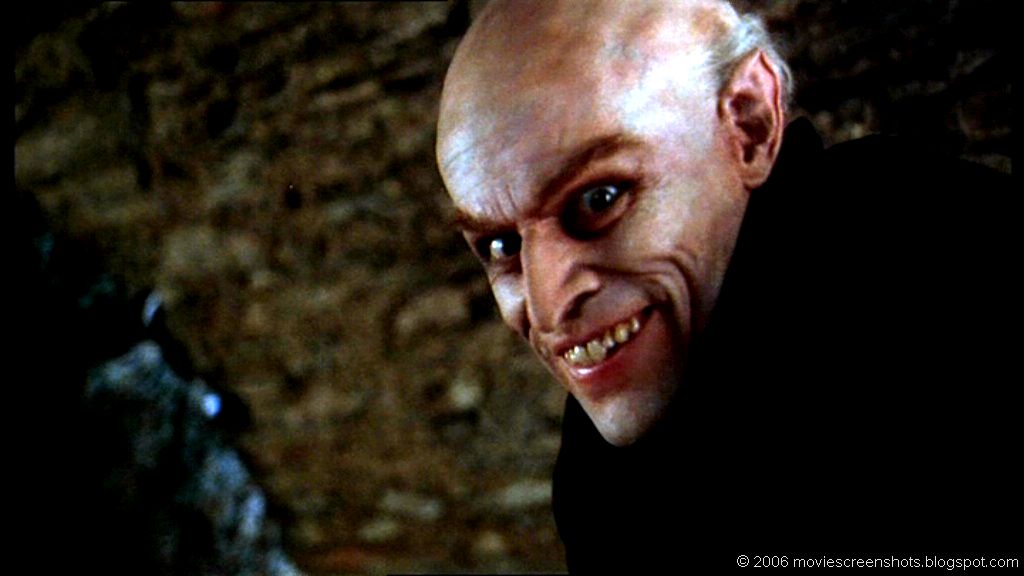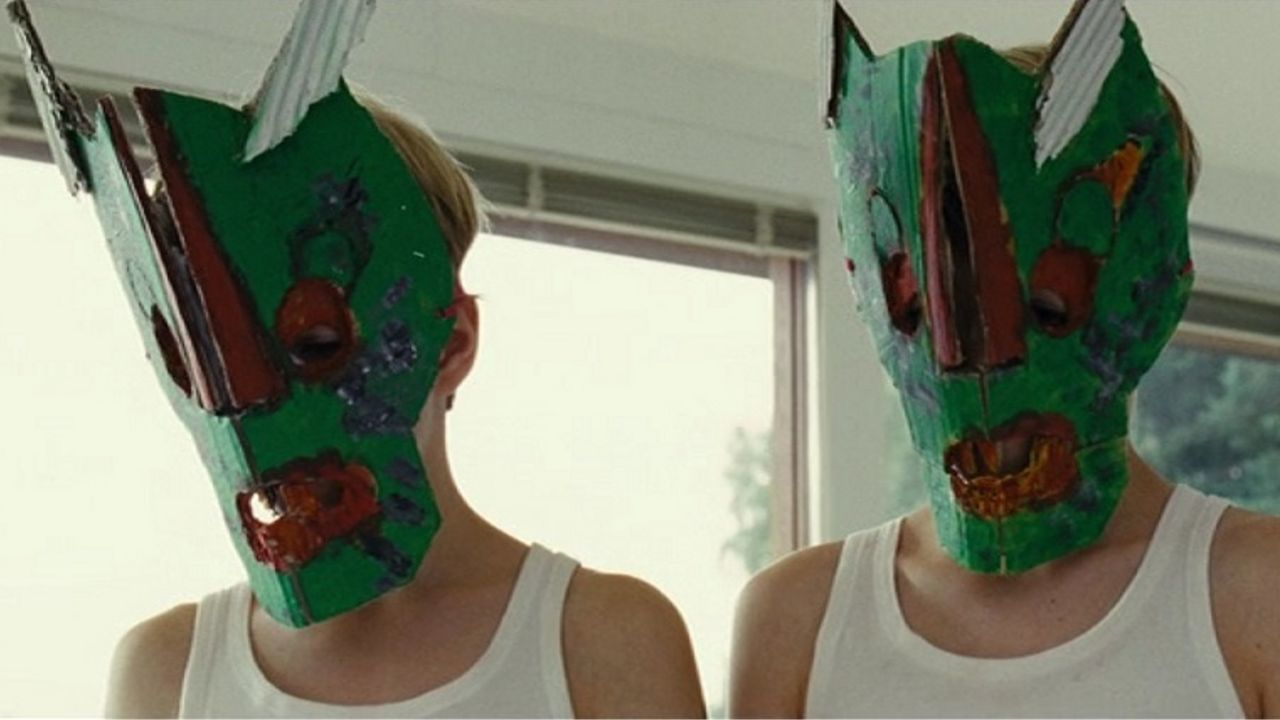So much great horror in 2016! We may not have had that much to be happy about last year – besides the Cavs national championship (hooray!!) – but at least we can celebrate one outstanding 365 days of horror.
Joined by Killumbus Horror’s fearless leader Bridget, we argue about what is and is not horror – and whether Neon Demon thrills or disappoints – plus a few words on scissoring.
10. Demon
Like the mournful soul that clings to poor bridegroom Piotr (Itay Tiran), Demon sticks to you. Director/co-writer Marcin Wrona’s final feature (he ended his life at a recent festival where the film was playing) offers a spooky, atmospheric rumination on cultural loss.
Wrona sets the Hebrew folktale of the dybbuk – a ghost that possesses the living – inside a Catholic wedding, accomplishing two things in the process. On the surface, he tells an affecting ghost story. More deeply, though, he laments cultural amnesia and reminds us that our collective past continues to haunt us.
With just a hint of Kubrick – never a bad place to go for ghost story inspiration – Wrona combines the familiar with the surprising. His film echoes with a deeply felt pain -a sense of anguish, often depicted as scenes of celebration clash with unexplained images of abject grief.
9. The Love Witch
Wes Anderson with a Black Mass fetish and a feminist point of view, Anna Biller wrote/directed/produced/edited/set-designed/costume-designed/music-supervised the seductive sorcery headtrip The Love Witch.
Elaine (Samantha Robinson – demented perfection) needs a change of scenery. Driving her red convertible up the seacoast highway toward a new life in northern California, her troubles – and her mysteriously dead ex-husband – are behind her. Surely, with her smart eyeshades and magic potions, she’ll find true love.
Expect a loose confection of a plot, as Elaine molds herself into the ideal sex toy, winning and then tiring of her trophies. This allows Biller to simultaneously reaffirm and reverse gender roles with appropriately wicked humor.
8. 10 Cloverfield Lane
Less a sequel than a tangentially related piece, 10 Cloverfield Lane amplifies tensions with genuine filmmaking craftsmanship, unveiling more than one kind of monster.
Michelle (Mary Elizabeth Winstead) wakes from a car crash handcuffed to a pipe in a bunker. Howard (John Goodman, top-notch as usual), may simply be saving her from herself and the apocalypse outside. Good natured Emmett (John Gallagher Jr.) certainly thinks so.
Goodman is phenomenal, but Winstead and Gallagher prove, once again, to be among the strongest young actors working in independent film today.
Talented newcomer Dan Trachtenberg toys with tensions as well as claustrophobia in a film that finds often terrifying relevance in the most mundane moments, each leading through a mystery to a hell of a climax.
7. The Wailing
“Why are you troubled,” Jesus asked, “and why do doubts arise in your hearts? Look at my hands and my feet. It is I myself. Touch me and see — for a spirit does not have flesh and bones, as you see I have.”
Though the true meaning of this quote won’t take hold until the final act, it presents many questions. Is this film supernatural? Demonic? Or, given the corporeal nature of the quote, is it rooted in the human flesh?
Yes.
That’s what makes the quote so perfect. Na meshes everything together in this bucolic horror where superstition and religion blend. The film echoes with misery, as the title suggests. The filmmaker throws every grisly thing at you – zombies, pustules, demonic possession, police procedural, multiple homicides – and yet keeps it all slippery with overt comedy.
6. The Greasy Strangler
Like the by-product of a high cholesterol diet, The Greasy Strangler will lodge itself into your brain and do a lot of damage.
A touching father/son story about romance, car washes and disco, this movie is like little else ever set to film. Both men fall for one particular “rootie tootie disco cutie,” and if that wasn’t enough, there’s a marauder on the loose – an inhuman beast covered head to toe in cooking grease.
The brilliantly awkward comedy leaves you scratching your head. Every absurd character begs for more screen time, and yet, each gag (and you will gag) goes on for an almost unendurable length of time.
The result is ingenious. Or repellant. Or maybe hilarious – it just depends on your tolerance for WTF horror and sick, sick shit. Whatever else it may be, though, The Greasy Strangler is – I promise you – hard to forget.
https://www.youtube.com/watch?v=VPl1vcb4hao
5. Don’t Breathe
For his sophomore effort Don’t Breathe, director Fede Alvarez dials down the blood and gore in favor of almost unbearable tension generated through masterful deployment of set design, sound design, cinematography and one sparse but effective premise.
Young thugs systematically robbing the few remaining upscale Detroit homeowners follow their alpha to a surefire hit: a blind man (Stephen Lang) sitting on $300k.
This is a scrappy film that gives you very little in the way of character development, backstory or scope. Instead, Alvarez focuses so intently on what’s in front of you that you cannot escape – a tension particularly well suited to this claustrophobic nightmare.
4. Under the Shadow
Our tale is set in Tehran circa 1988, at the height of the Iran/Iraq war and just a few years into the “Cultural Revolution” that enforced fundamentalist ideologies.
Shideh (a fearless Narges Rashidi) has been banned from returning to medical school because of her pre-war political leanings. Her husband, a practicing physician, is serving his yearly medical duty with the troops. This leaves Shideh and their young daughter Dorsa (Avin Manshadi) alone in their apartment as missiles rain on Tehran.
When a dud missile plants itself in the roof of the building (shades of del Toro’s Devil’s Backbone), Dora starts talking to a secret friend. Maybe the friend would be a better mommy.
The fact that this menacing presence – a djinn, or wind spirit – takes the shape of a flapping, floating burka is no random choice. Shideh’s failure in this moment will determine her daughter’s entire future.
3. Green Room
The tragic loss of 27-year-old talent Anton Yelchin makes this one bittersweet. Young punk band the Ain’t Rights is in desperate need of a paying gig, even if it is at a rough private club for the “boots and braces” crowd (i.e. white power skinheads). Bass guitarist Pat (Yelchin) eschews social media promotion for the “time and aggression” of live shows, and when he accidentally witnesses a murder in the club’s makeshift green room, Pat and his band find plenty of both.
Along with concertgoer Amber (a terrific Imogen Poots), they’re held at gunpoint while the club manager (Macon Blair from Blue Ruin) fetches the mysterious Darcy (Patrick Stewart, gloriously grim) to sort things out. Though Darcy is full of calm reassurances, it quickly becomes clear the captives will have to fight for their lives.
As he did with Blue Ruin, writer/director Jeremy Saulnier plunges unprepared characters into a world of casual savagery, finding out just what they have to offer in a nasty backwoods standoff.
It’s lean, mean, loud and grisly, and a ton of bloody fun.
2. The Eyes of My Mother
First time feature writer/director Nicolas Pesce, with a hell of an assist from cinematographer Zach Kuperstein, casts an eerie spell of lonesome bucolic horror.
There is much power in dropping an audience into a lived-in world – the less we know, the better. Pesce understands this in the same way Tobe Hooper did with The Texas Chainsaw Massacre, and though The Eyes of My Mother lacks the cynicism, satire and power tools of Hooper’s farmhouse classic, it treads some similar ground.
Where Eyes differs most dramatically from other films is in its restraint. The action is mostly off-screen, leaving us with the sounds of horror and the quiet clean-up of its aftermath to tell us more than we really want to know.
1. The Witch
In set design, dialog, tension-building and performances this film creates an unseemly familial intimacy that you feel guilty for stumbling into. There is an authenticity here – and an opportunity to feel real empathy for this Puritan family – that may never have been reached in a “burn the witch” horror film before.
On the surface The Witch is an “into the woods” horror film that manages to be one part The Crucible, one part The Shining. Below that, though, is a peek into radicalization as relevant today as it would have been in the 1600s.
Beautiful, authentic and boasting spooky lines and images that are equally beautiful and haunting, it is a film – painstakingly crafted by writer/director Robert Eggers – that marks a true new visionary for the genre.









